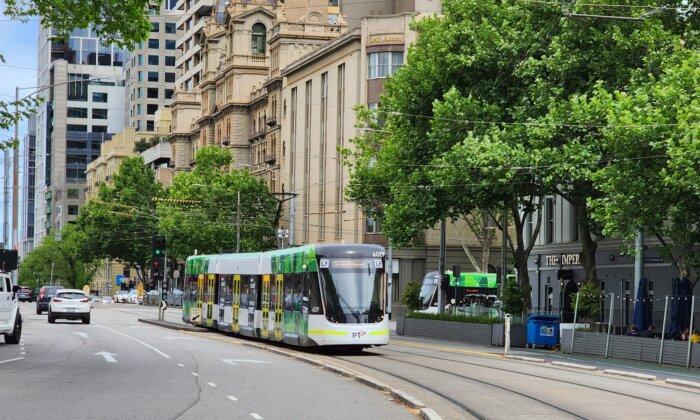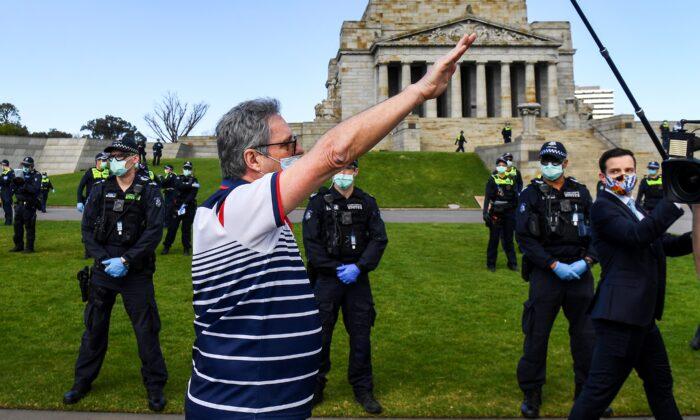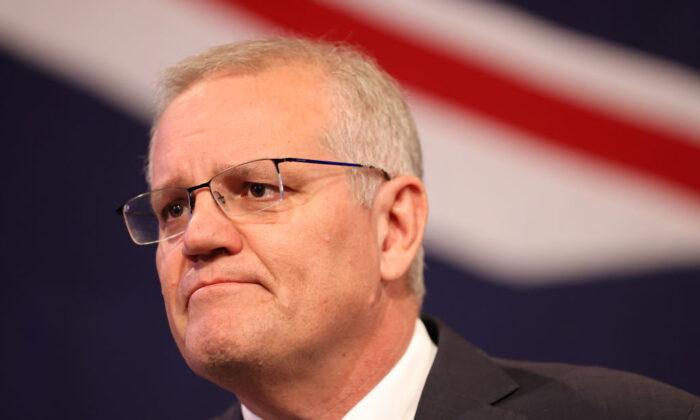Activists associated with climate campaigner Greenpeace Australia scaled a 140-metre-high crane opposite oil and gas producer Woodside Petroleum’s headquarters in Perth on Dec. 5.
Once reaching the top of the crane just after 6 a.m., the four protestors unveiled a yellow 25-metre vertical banner reading “Stop Woodside.”
Local police were forced to cordon off Spring Street in Perth’s CBD which lies directly below the crane and next to Woodside’s corporate office, significantly impeding traffic.
All four climbers, comprising three men and a woman, were then taken into custody with charges yet to be confirmed.
The demonstration came just two days after Greenpeace protestors attempted to obstruct the activities of deep sea miners in the East Pacific Ocean, using canoes and dinghies to block the path of Coco—a mining exploration vessel operated by a subsidiary of Canadian-based miner The Metals Company.
It also comes four months after protestors from the activist group, Disrupt Burrup Hub, demonstrated outside Woodside CEO Meg O’Neil’s home in Perth.
Greenpeace Australia has long declared its opposition to Woodside’s planned developments off the coast of Western Australia, campaigning in conjunction with other environmental groups like the Conservation Council of Western Australia (CCWA), and Disrupt Burrup Hub.
“You can help stop the biggest fossil fuel project currently proposed in Australia to protect precious whales, dolphins, turtles—and our climate—from devastation,” the Greenpeace website reads.
“Hidden off the coast of Western Australia, fossil fuel giant Woodside wants to develop the Burrup Hub, a massive gas nightmare that will endanger reef systems and wreck our climate.”
Burrup Hub
Woodside’s planned Burrup Hub mega-project comprises the development of two new gas fields just off the coast of northern Western Australia’s Pilbara region with pipelines connecting the fields to the company’s existing liquefied natural gas (LNG) terminals.The company aims to amalgamate both the Scarborough and Browse gas fields with its Pluto and North West Shelf liquified natural gas (LNG) projects to create a behemoth LNG production centre set to extract an additional 20-25 trillion cubic feet of resources.
According to a report from consulting firm ACIL Allen, the initiative has the potential to yield a number of economic benefits.
With the project’s average annual LNG production just under a third of WA’s projected LNG exports, Burrup Hub’s estimated average annual domestic production is enough to generate electricity to power 1.2 million Western Australian homes.
It may also spur additional employment opportunities, with just under 1,100 operations jobs either created or sustained throughout the project’s operations period, with 460 of these in the Karratha region, a regional area that hosts a relatively high Aboriginal population.
The project is also set to contribute to both the Western Australian and national economies through tax revenue and capital expenditures.
According to ACIL Allen’s projections, the proposed capital expenditure from the hub’s development is equivalent to the construction costs of 33 Optus Stadiums.
The project is expected to boost the gross domestic product (GDP) of Australia by $414 billion by the end of 2063, equivalent to 31 percent of the national GDP in 2022, increasing the real incomes of residents across the country by $370 billion in the same time frame.
Nonetheless, activist groups like Disrupt Burrup Hub and Greenpeace are concerned about the development due to what they believe are the serious environmental ramifications that will accompany it.
They are particularly worried about the dangers the project will pose to local marine life, given that seismic blasts are typically a key component of gas exploration, a practice that can inhibit the health and breeding abilities of whales and dolphins.
There is also the potential for carbon emissions.
According to Greenpeace Australia, the project will emit 6.1 billion tonnes of carbon dioxide into the atmosphere over its lifetime, equating to 12 years of current national emissions.
“This data proves that Woodside’s massive Burrup Hub project is far and away the most polluting fossil fuel proposal in Australia—it’s a disaster in the making for our environment and our climate,” Jess Panegyres, head of Clean Energy Transition at Greenpeace Australia claimed.







